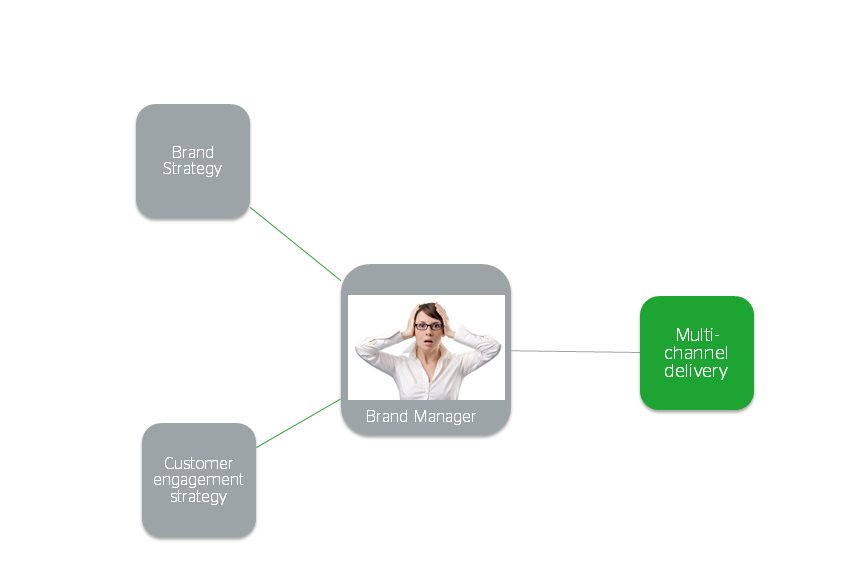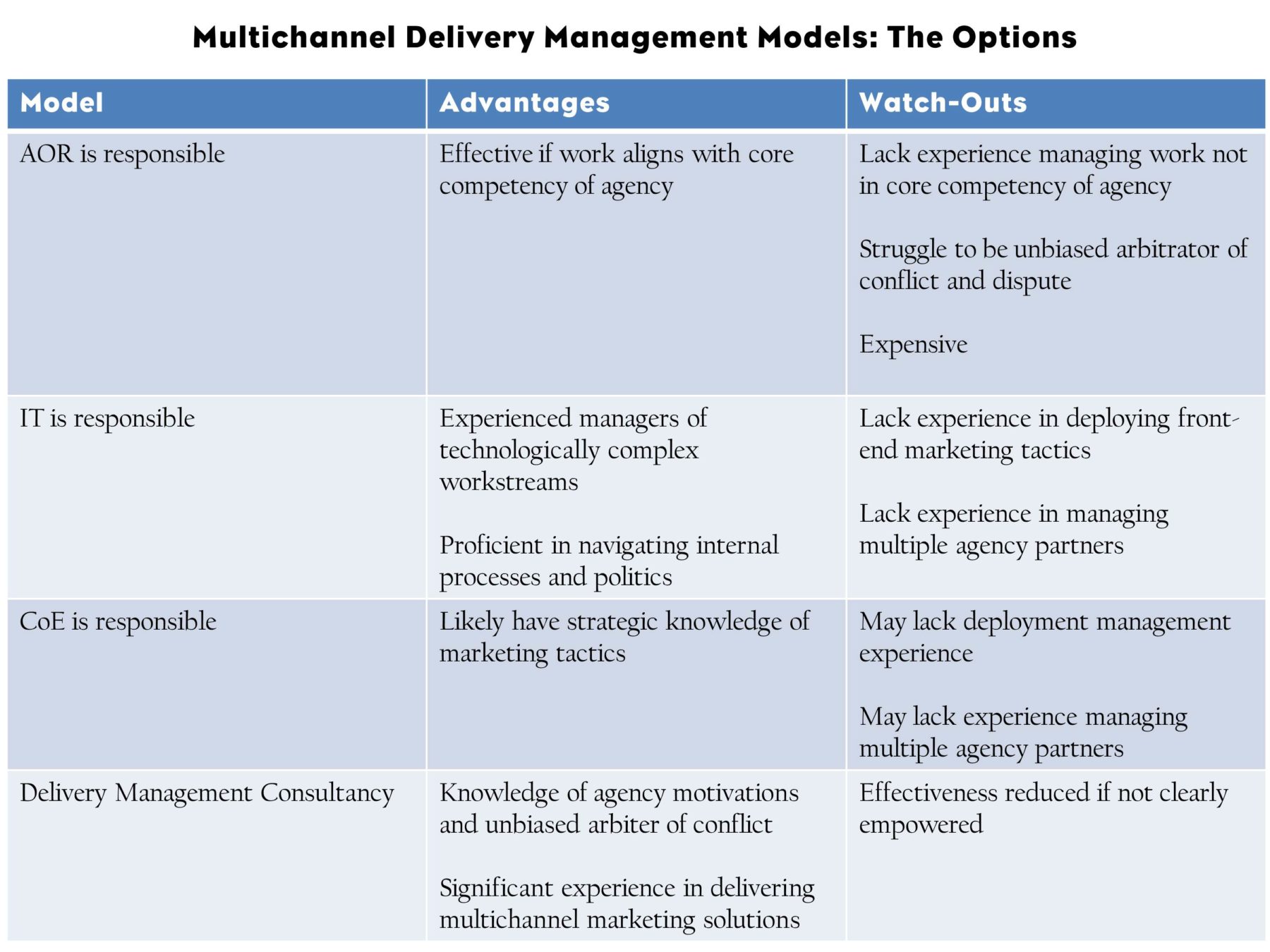Today’s life sciences brand manager is frequently expected to take on so many different responsibilities that excelling in all of them is nearly impossible. They are required to be a Brand Strategist, guiding traditional brand strategy decisions—segmentation, targeting, positioning, and communication objectives. They are asked to be a Customer Engagement Strategist directing the patient and provider experience. As if that weren’t enough, they are also asked to be a Multichannel Delivery Manager, overseeing the day-to-day execution of individual tactics.
As the health marketing ecosystem grows increasingly complex each day, so do the expectations of brand manager knowledge and capability. By some estimates, more than 54 discrete HCP and patient channels are available to brand managers today! It’s no wonder that several studies point to a growing “digital knowledge” gap as one of the biggest challenges facing life sciences marketers. For example, according to one study only 18% of life sciences companies are satisfied with their digital marketing programs.
Left unattended, the expansion of brand manager responsibilities and the resulting knowledge gap has adverse effects on brand performance. While difficult to quantify, it shows up in a variety of ways: Turnover rates, poorly designed programs, project delays, and overages. The problem is particularly acute in mid-size and smaller life sciences companies which often lack well developed internal support competencies to assist the brand manager, but it is also an issue that affects larger organizations whose support departments aren’t adequately staffed or integrated with the brand teams.
Fortunately, this is a problem that can be fixed. The easiest place to start is to free up brand managers’ time to concentrate on the strategic aspects of their job (brand and customer engagement strategy) where they can add the greatest value, and lessen the time they spend managing the details of multichannel delivery, which includes everything from tactic scoping, partner management, cross-work stream integration and scheduling, risk management, and delivery process improvement. Instead, they can consider any of these three models for supporting brand teams in multichannel delivery management, each with distinct advantages and disadvantages.
OPTION 1: The AOR
The first option (and a common one) is to ask your Agency of Record (AOR) to manage execution across all channels. In an environment with a limited number of tactics and agency partners, this can be an effective solution, as the Account or Delivery lead at the agency needs only to manage their team and a few other stakeholders. This model works well when the program is aligned with the core competencies of that agency (e.g., content creation and creative development). However, when there are multiple different tactics requiring multiple specialist vendors (e.g., social media, technology, mobile, etc.), the AOR model faces challenges.
First, it is often costly to use the AOR to oversee cross program multichannel delivery as the staffing model of a typical AOR requires multiple points of escalation and their associated staff allocations. This quickly adds up to significant cost to the brand. Second, the skill sets of an Account or Delivery lead are going to be aligned with the core focus of that agency. It is unrealistic to expect the Account or Delivery lead of a strategy and content focused agency to have the knowledge to foresee and proactively manage risks in a technologically complex effort such as the development of a website on a new CMS platform, for example.
Finally, as the inevitable conflicts arise between agencies, internal teams, or other stakeholders, the AOR will have a bias toward a solution that most benefits their organization, and other stakeholders will resist this. When this occurs, the only point of escalation is the brand manager. In order to effectively make key decisions and arbitrate conflict, they will need an understanding of the details of the decision, forcing them to “catch up” or make partially informed decisions. As result, the brand manager is frequently pulled back into day-to-day management.
OPTION 2: Internal Support from IT or a “CoE”
A second option for staffing delivery management is to rely on a centralized internal team. This can come from IT or a multichannel or digital center of excellence (CoE). A project manager assigned from an internal IT group is usually well versed in the organization’s internal structure and processes, and highly trained in IT best practices. However, they are rarely experienced in end to end, multichannel marketing best practices. The IT delivery manager may be very effective in the technical aspects of the aforementioned website build on a new CMS platform, but it is unlikely that they will be effective in executing the integrated social media campaign that goes along with the launch of the new website. This knowledge gap creates risks across projects that must be mitigated by someone, most often pulling the brand manager back into day-to-day risk management.
Using an internal digital or multichannel COE is another solution for brand managers. However, brand managers must ensure that the resources assigned to support them are truly Delivery Managers, and not Digital Strategists, Business Analysts or subject matter experts who lack delivery management skills. The analyst/strategist can be a very valuable addition to the team in shaping strategy, sharing best practices from across the organization, and providing company guidelines; however, they may be a “square peg in a round hole” when tasked with keeping a multichannel, multi-organization campaign execution on track, as they will lack the skills and knowledge to effectively navigate the inter-agency politics, which will result in the brand manager being pulled in to navigate those challenges.
OPTION 3: Hire a Delivery Management Consultancy
A third option is to hire an outside multichannel delivery consultancy to direct delivery management activity across the brand’s marketing efforts. This approach provides several advantages. First, this model provides delivery staff with the knowledge and skills to direct delivery across all channels and tactics. Second, as a third-party focused on delivery management, they will not have a political agenda to generate new work and can effectively manage the different stakeholders, both internal and external, across each of the various tactics. Finally, if sufficiently empowered, your delivery team can act as a filter for the brand, resolving many points of contention and finding unbiased and balanced resolution to issues. This allows the brand managers to focus on strategy and only participate in the execution phase to make brand impacting decisions, rather than being bogged down in the day-to-day details of tactical delivery.
There are two possible drawbacks to this model. First, it requires contracting with a separate entity. Secondly, for this model to work, the brand team must empower its partner to work with the other partners, make decisions, and be the leaders of the collective team.
Overview of Options
Ultimately, each of the three models have their benefits and drawbacks in providing delivery management support, and each can achieve the goal of freeing the brand manager from day-to-day delivery management.
When the campaign does not have a large number of stakeholders and aligns with the core competency of the AOR, it is likely that they will be successful in managing that campaign.
When the campaign is a constrained, technically deep update to a platform or website, the IT group within the organization will have the appropriate resource.
If the centralized commercial services group has strong, experienced multichannel Delivery Managers who are comfortable managing the various agencies servicing the brand, then leveraging that service is likely the most efficient solution.
However, in the common situation in which a wide variety of tactics and specialist partners need to be managed in parallel with no suitable internal delivery management capability, an outsourced delivery management consultancy can accelerate speed to market, create cost and process efficiencies, while freeing up a brand manager’s time.









